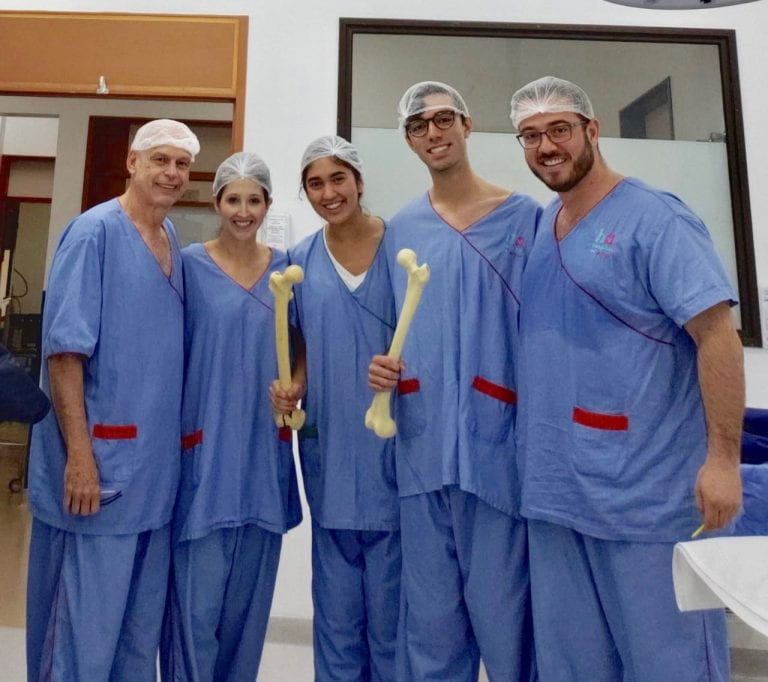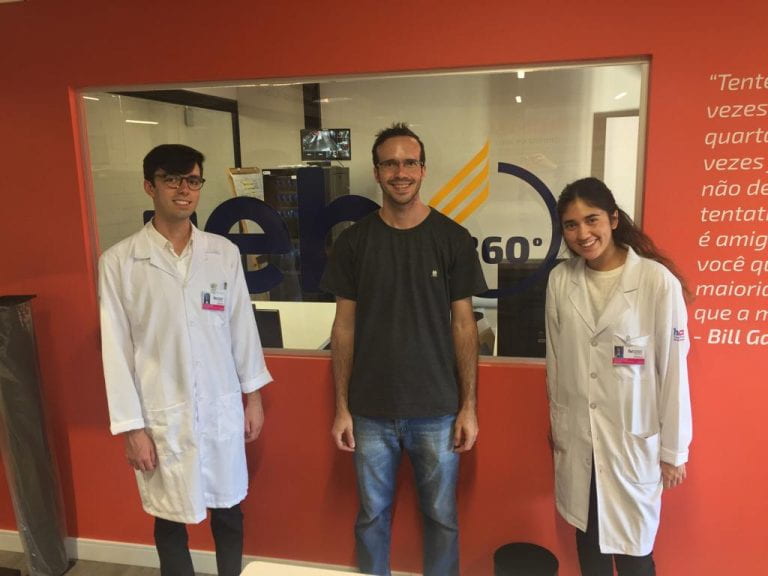Oi Pessoal!
My second week in Barretos has come to an end. This week was not as packed with tours of the hospital’s facilities as last week, which really allowed Paula and I to gain a greater sense of stability and awareness on where we stand with our projects so that we can move forward.
Before diving into our projects Paula and I were given the chance to visit FEB 360 and attend the culmination of an educational experience the Hospital de Amor creates for local high schools in the area. FEB 360 is a maker space within UNIFEB, a local university within the city of Barretos. Paula and I put ourselves in contact with FEB 360 before leaving for Brazil under the hope that we would be able to use the engineering tools they have. This was particularly important as the Hospital de Amor does not have a dedicated engineering space. Thanks to Carol, our amazing point of contact and coordinator at the Hospital de Amor, we were able to get a tour and were welcomed to use the facilities at FEB 360. I anticipate that Paula and I will need to use the printed circuit board machine, laser cutter, and 3D printers to improve upon the spectrum of products which we aim to complete while in Barretos.
Paula and I were also given the chance to attend the final competition for an educational outreach program the Hospital de Amor has for local high schools. The program, Festival Cuidar, aims to have students produce artistic products (films, dances, paintings, songs) which represent cancer in any form. It is anticipated that through this process the students are able to understand not only the risks associated with cancer but also the holistic care which must be given to patients undergoing treatment. A video produced by the hospital is provided to the students for guidance. It was great to see all the hard work and creativity the students put into their projects.
The video provided to the students by the hospital as guidance.
In addition to these outings outside the main hospital, Paula and I were able to meet with Dr. Sylvio Sargentini in orthopedics at Hospital de Amor. He walked us through the procedure for a femur intramedullary rodding. In this procedure, a metal rod is placed within the femur and secured by four screws. This is often required when a cancer patient has reached metastasis, meaning that their cancer has spread throughout the body. One of the main locations where cancer first spreads once it reaches metastasis is the femur. This places the patient at risk of breaking a bone as the attached cancer will weaken it. It is thus through the insertion of a metal rod that patients can feel secure in walking while they undergo chemotherapy, in an attempt to remove the spreading cancer. Dr. Sylvio informed Paula and I through our meeting that often times in surgery it is difficult to secure the rod while it is being maintained stable after initial insertion due to obstruction of the screws by these stability rods. This means a doctor must currently use an x-ray machine in surgery to visualize specific regions where they can screw in with the stability rods still in place. Therefore, doctors and patients are exposed to high levels of x-rays throughout surgery and those with inexperience often struggle to perform the procedure. As such, Dr. Sylvio asked Paula and I to create a new stability mechanism which would allow for the securing of the rod without the use of an x-ray machine. This is a potential project we will look into further, but to gain a greater understanding of how the procedure is performed we have also been invited and will be attending a live femur intramedullary rodding by Dr. Sylvio this week! Through viewing this procedure Paula and I will better be able to evaluate what needs to be done to the stability device.

Paula and I holding fake femurs after being shown how to perform a femur intramedullary rodding by Dr. Sylvio and his team.
While on the lookout for additional projects to complete while in Barretos, Paula and I were able to continue to work in greater depth on Project ACE and WounderWoman.
This week we were able to create new inserts for Project ACE per Dr. Luis Romagnolo’s guidance. We created a new healthy tissue insert and hemorrhoid insert. The main change, outside of the switch from cancer to hemorrhoid inserts, was the creation of more space within the insert. The previous inserts were too tight to perform a proper anal exam meaning students would not be able to diagnose. We also made a point to smooth out edges throughout to create a more tissue-like environment. This following week we hope to meet with Dr. Luis to receive feedback. If the overall shape is what he was looking for we will look into creating an additional insert to represent anal lymphoid polyps (another request by Dr. Luis).
After receiving the initial feedback from Dr. Vinicius Vasquez that he could not get the prototype given to him by the previous team to work, we took some time this week to look more in-depth into potential problem sources. I have listed below what we determined needs to be fixed upon our initial inspection and how we can address these problems.
- Water entered pump
- We noted that water had entered the pump due to no filter on the suction mechanism. This could have damaged the pump rendering it useless. Through the addition of a one way, suction valve water should not be able to reach the pump in future designs.
- The full voltage capacity of the pump was not being utilized
- The pump is currently designed to have a 12V capacity. There was a 9V battery currently built into the circuit, therefore, meaning that the full capacity of the pump was not being used. Through the replacement of the 9V battery with a 12V battery, the full capacity of the pump can be utilized. This will also mean the pump will have greater suction (one of Dr. Vinicius’s requests).
- Paula and I also have decided to look more in-depth into the addition of a direct plug as well. This would allow a patient to plug the device into the wall, thus not depleting the battery, while they receive treatment in a stable location either at the hospital or in their home.
- There is not a strong seal on the current silicone cap
- The current silicone cap lid does not create a tight seal. This makes it difficult for the WounderWoman device to create negative pressure. Either through the creation of a new silicone cap or the addition of a cheap standardized bottle, a greater seal can be created to allow for adequate suction to occur.
- The current pressure switch does not offer enough pressure options
- The current pressure switch on WounderWoman only allows for a Hi-Low setting therefore not providing a patient or doctor the range of potential suction levels they may require. As such, we would like to include a variable resistor in the circuit which would allow for a full range of suction levels. This also means we will be including a dial instead of a switch in the new design.
- Addition of an Arduino interface
- Paula and I believe that through the addition of an Arduino interface WounderWoman could provide patients and doctors with greater information about the status of the device in an easier to read manner. We would like to include this interface so that the battery level of the device can be monitored as well as the pressure level the device is creating (there is currently a mechanical pressure gauge).
I am excited to continue working on our devices this following week. I hope to begin the process of finishing our work for Project ACE in this next week as well as create a preliminary new circuit and interface for WounderWoman. This following week Paula and I will be meeting with more doctors in palliative care within the hospital to discuss current gaps in treatment that they see. With the end of my second week in Brazil and the start of my third, I have included another beautiful Barretos sunset for you all.
Até logo!


